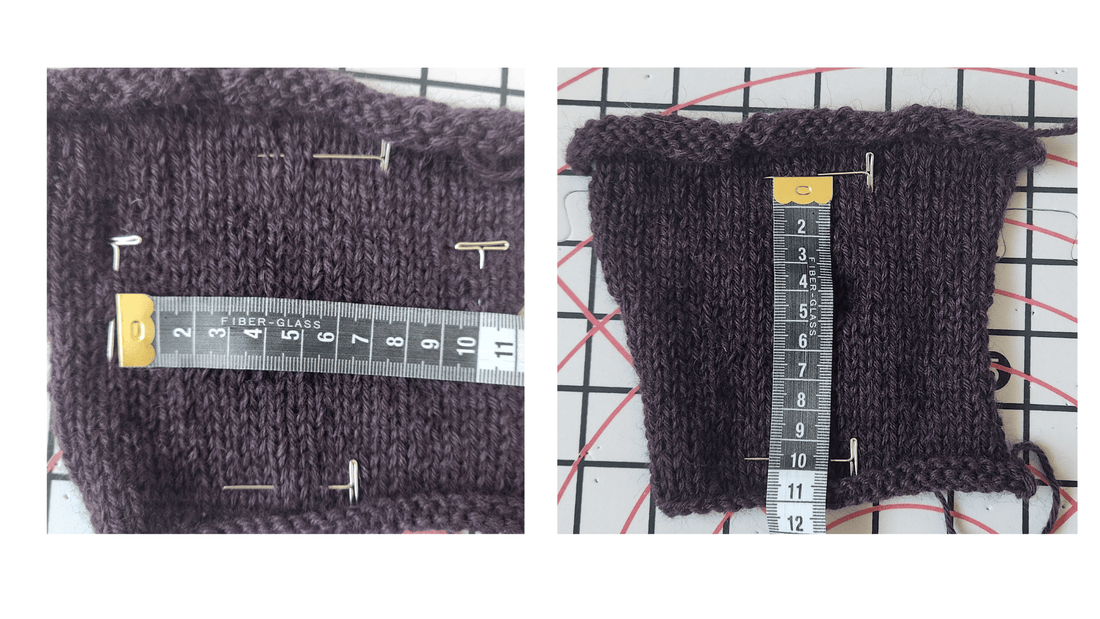
Why should I make a tension square
Share
Tension
Everyone knits and crochets differently. Some people knit/crochet a tight stitch (or smaller stitch) and some people knit/crochet a looser (larger) stitch. This makes it difficult when interpreting a pattern, which assumes a set number of stitches and rows over an area. Generally, today, most tension guides will be for an area of 10cm (4").
If you knit more loosely than the pattern, you might have to go down a needle/hook size to achieve the correct number of stitches per inch/cm. Likewise, if you knti/crochet tightly, you may have to go up a needle/hook size to achieve the same.
How do I know what the right tension should be
You can find the recommended tension for a yarn on the yarn wrapper, and on the pattern instructions if you are using the pattern recommended yarn.
How do I know what tension I knit or crochet to
You need to test your tension before you start to use a new yarn or work a pattern. You do this by knitting a swatch (which you might sometimes see written as "tension square").
It feels like an extra commitment when you have a whole jumper to knit, BUT, it can save you a lot of time in the long run. You won't need to unravel the whole sweater because it came out too large or too small.
What is a tension square
It's a swatch that you knit up in the same stitch as the pattern with the same yarn, the same needles, and the same stitch pattern that you’ll use for your actual project.
Let's assume the pattern is in stocking stitch and has a tension of 20 sts and 25 rows per 10 cms.
Cast on the number of stitches for the gauge (in this case 20) plus, appoximately another 10 sts. Knit in the stitch stated in the pattern for about 6" / 15 cm. Cast off.

Now:
1. Count the stitches - put a pin a few stitches in, measure 10cm (4") across and put another pin in. Count the stitches between the pins. Count again to double check!
2. Count the rows - put a pin a few rows in from the start and measure up 10cm (4"). Count the rows between the pins.
The cost of not working a tension square
If you do not knit to the pattern tension, the end result will be a sweater that is too large, or too small.
Consider:
- Pattern tension = 20 stitches (sts) per 10 cm using 4.5mm (US 7) needles
- Pattern cast on is 200 sts (in the round)
- Therefore, the circumference of the work is 100cm
[200 cast-on sts / 20 sts * 10 cm = 100 cms]
Situation 1: Your tension is the same as the pattern tension - YEAY!
Situation 2: You knit tightly and you get an extra 2 sts over 10cm (22 sts. Your work will be 10cm smaller than the pattern
[(200 (sts) / 22 sts * 10 cm = 90 cms]
Situation 3: You knit loosely and your tension, so you only get 18 sts per 10 cm. Your work will be 10cm larger than the pattern
[200 (sts) / 18 sts * 10 cms = 110 cms]
10 cms either way is a big difference!
How can I fix it?
- Situation 1: Start knitting !
- Situation 2: if you are a tight knitter, try going up a size in needles (in this example, use 5mm(US 8) needles
- Situation 3: if you are a loose knitter, try going down a size in needles (in this example, try 4mm (US 6) needles
When do I measure the tension square
Already, you are going to hate this answer. You should measure it before you block it, and after you block it. "Measure it twice", I hear you say, "I don't even want to do this once!"
Why twice?
The problem is really about the number of rows per 10cm (4"). Most modern patterns state "continue until work measures XYZ cm(inches)". But post-blocking, your knitting will change shape and you need to be able to adjust for this when you are measuring the pattern. There are two ways to do this:
1. Count the rows** - so if your tension is 25 rows per 10cm (4"), and the piece says, "continue until work measures 30cm", you know that you need:
25 (rows) /10 (cm) * 30 (cm) = 75 rows
or
2. Adapt the length based on your pre-blocked and post-blocked tension square.
** Row counters that you attach to your needles can really help with this if you are using single pointed needles.
